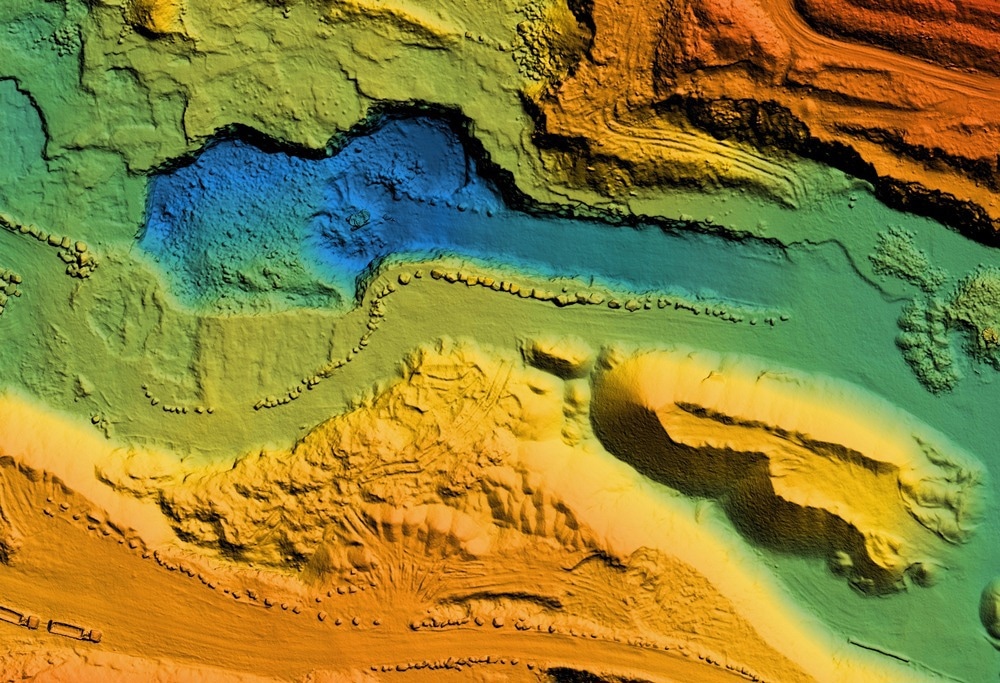 By Surbhi JainReviewed by Susha Cheriyedath, M.Sc.Jul 26 2022
By Surbhi JainReviewed by Susha Cheriyedath, M.Sc.Jul 26 2022In an article published in Optics and Lasers in Engineering, researchers discussed the vortex beam-based single-shot time-of-flight (TOF) ranging with sub-wavelength accuracy.

Study: Single-shot time-of-flight ranging with sub-wavelength accuracy using vortex beam. Image Credit: Ungrim/Shutterstock.com
Time-of-Flight Ranging in Laser-Based Light Detection and Ranging (LIDAR) Technology
LIDAR technology is widely used in optical processing, chip fabrication, and other precise industrial process monitoring. Time-of-flight is one of the most basic ranging techniques used in LIDAR systems.
Numerous studies have been conducted to increase the time-of-flight scheme's range accuracy. Commercial systems have been created to attain range precision of millimeter or even micrometer scale, ranging from magnitude modulated time-of-flight to frequency modulated time-of-flight.
Optical frequency combs are helpful for time-of-flight schemes due to femtosecond laser pulse technology advancement. These new systems have demonstrated distinctive benefits in quick and precise ranging with sub-wavelength accuracy and a megahertz acquisition rate.
While reaching high precision, the rate of acquisition improvement is constrained. There has not been any significant study carried out to resolve the fundamental conflict between acquisition rate and ranging accuracy.
Vortex Beams: Paraxial Light Fields
Paraxial light fields called vortex beams carry orbital angular momentum (OAM).
The detection, creation, and emerging applications of OAM have been the subject of various research projects.
Vortex beams have recently been employed in imaging, object identification, ultra-sensitive angle measurements, spinning object detection, and quantum pattern recognition.
Applications such as additional information identification of natural settings and scanning LIDAR with no moving parts are made possible by using vortex beams in LIDAR systems.
In this study, the authors demonstrated the capability of vortex beams to transfer time-of-flight into the rotation of the spatial intensity distribution of light, which was detectable in a single shot.
With the help of this mechanism, ranging devices were capable of sub-wavelength accuracy and acquisition speeds reaching one gigahertz.
The study showed 51 nanometer-accurate single-shot depth measurements, which enabled the rapid gathering of displacement data in one millisecond.
The team provided a brand-new method based on vortex beams to measure time-of-flight in the space domain.
The system exhibited exceptional accuracy and rapid detection speeds unconstrained by continuous measurement.
In the proposed experiments, a petal-like intensity distribution with a rotational angle that was directly proportional to time-of-flight was produced by superimposing vortex beams.
The authors achieved depth measurement with a 51-nanometer accuracy in a single shot by detecting the echo light with an array detector and resolving the rotation angle.
To increase ranging accuracy, the technique had no reliance on continuous measurement.
The researchers showed that the demonstrated technique maintained range accuracy even as the acquisition time dropped to 1 nanosecond. The proposed technique could be used in ranging systems with sub-wavelength accuracy and acquisition rates of more than one gigahertz by combining it with a high-speed detector.
Dual-Vortex Beams for Ultrafast Ranging
The Allan deviation was kept at roughly 50-nanometers, even with exposure times as little as 1 nanosecond.
With a temporal resolution of 10 picoseconds, the adjustment range for the picture intensifier's switch-on time was 0 to 10 seconds.
Allan variation ranged from 1.21 to 7.51 millimeters.
The standard deviation doubled despite a seven order of magnitude reduction in exposure time.
A simple harmonic oscillator with an amplitude of 2 micrometers was used to represent the target's displacement.
Using the residuals' standard deviation to measure accuracy, the proposed system showed a high precision of 51 nanometers.
The suggested scheme explained how dual-vortex beams could be capable of ultrafast exact ranging, internally caused by the intensity distribution's rotation during light propagation. In this instance, time-of-flight was transformed to the pattern's angle of rotation on the cross-section, which an array detector could pick up in a single shot.
The rotational speed of the time-of-flight pattern was inversely related to the square of the pattern radius because of the conservation of angular momentum.
The rotation angle corresponding to the same time-of-flight would be amplified by focusing the probe signal. This offered a method for enhancing range accuracy without lengthening acquisition time.
Conclusions
This study elucidated that concentrating the probe signal with a 40x objective lens made it possible to do single-shot time-of-flight ranging with a precision of 51 nanometers.
The detector's response time was the only factor limiting the proposed scheme's acquisition speed.
The system could retain ranging accuracy without degrading it even at an acquisition period as brief as 1 nanosecond.
These findings suggested that a high-speed detector could enable time-of-flight ranging with acquisition rates surpassing 1 gigahertz and sub-wavelength accuracy.
The authors mentioned that the findings of this study suggest that measuring in the space domain may be used to increase acquisition rate and accuracy independently.
Reference
Cen, L., Zhang, Z., Liu, L., et al. (2022) Single-shot time-of-flight ranging with sub-wavelength accuracy using vortex beam. Optics and Lasers in Engineering, 107189 https://www.sciencedirect.com/science/article/abs/pii/S0143816622002421
Disclaimer: The views expressed here are those of the author expressed in their private capacity and do not necessarily represent the views of AZoM.com Limited T/A AZoNetwork the owner and operator of this website. This disclaimer forms part of the Terms and conditions of use of this website.